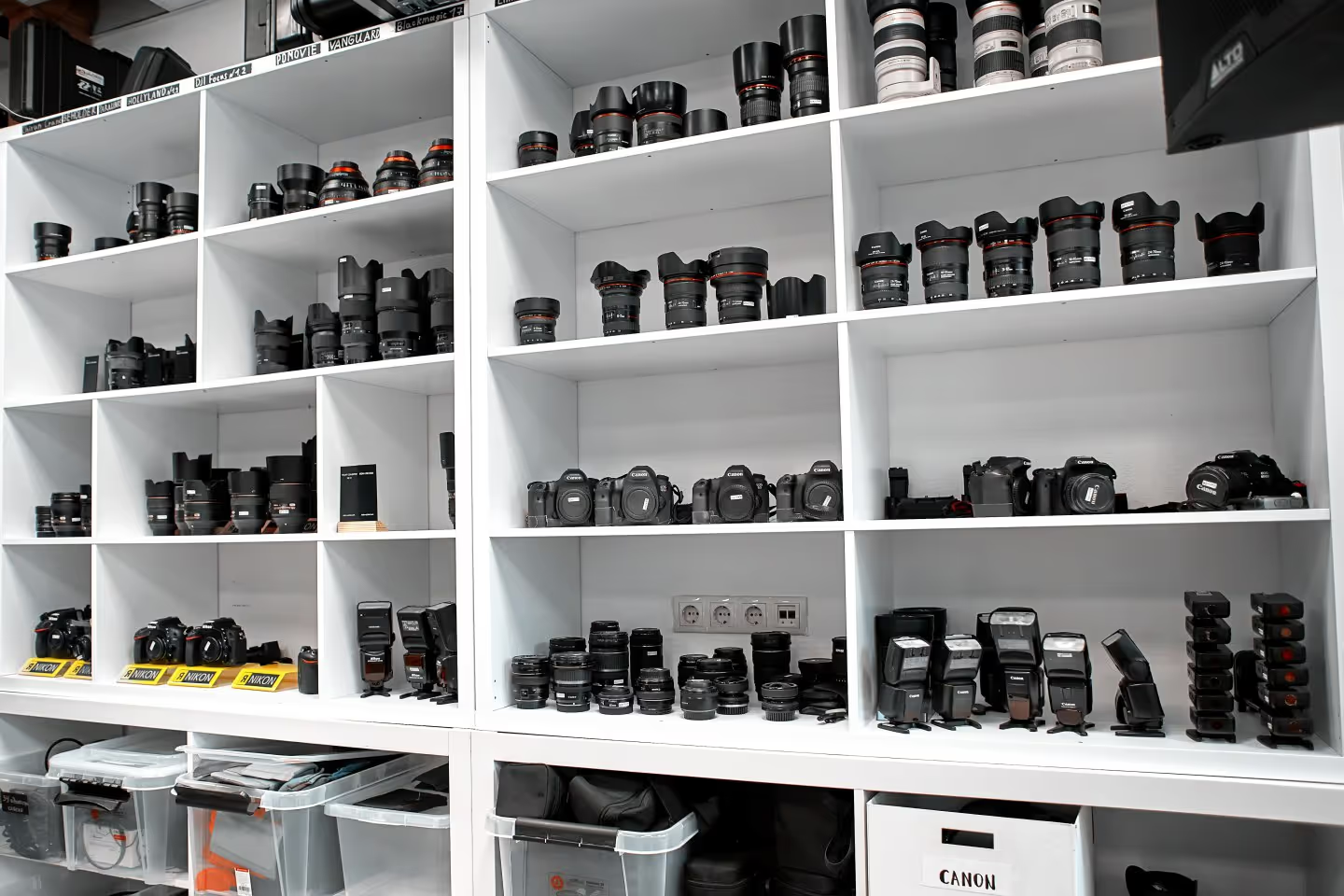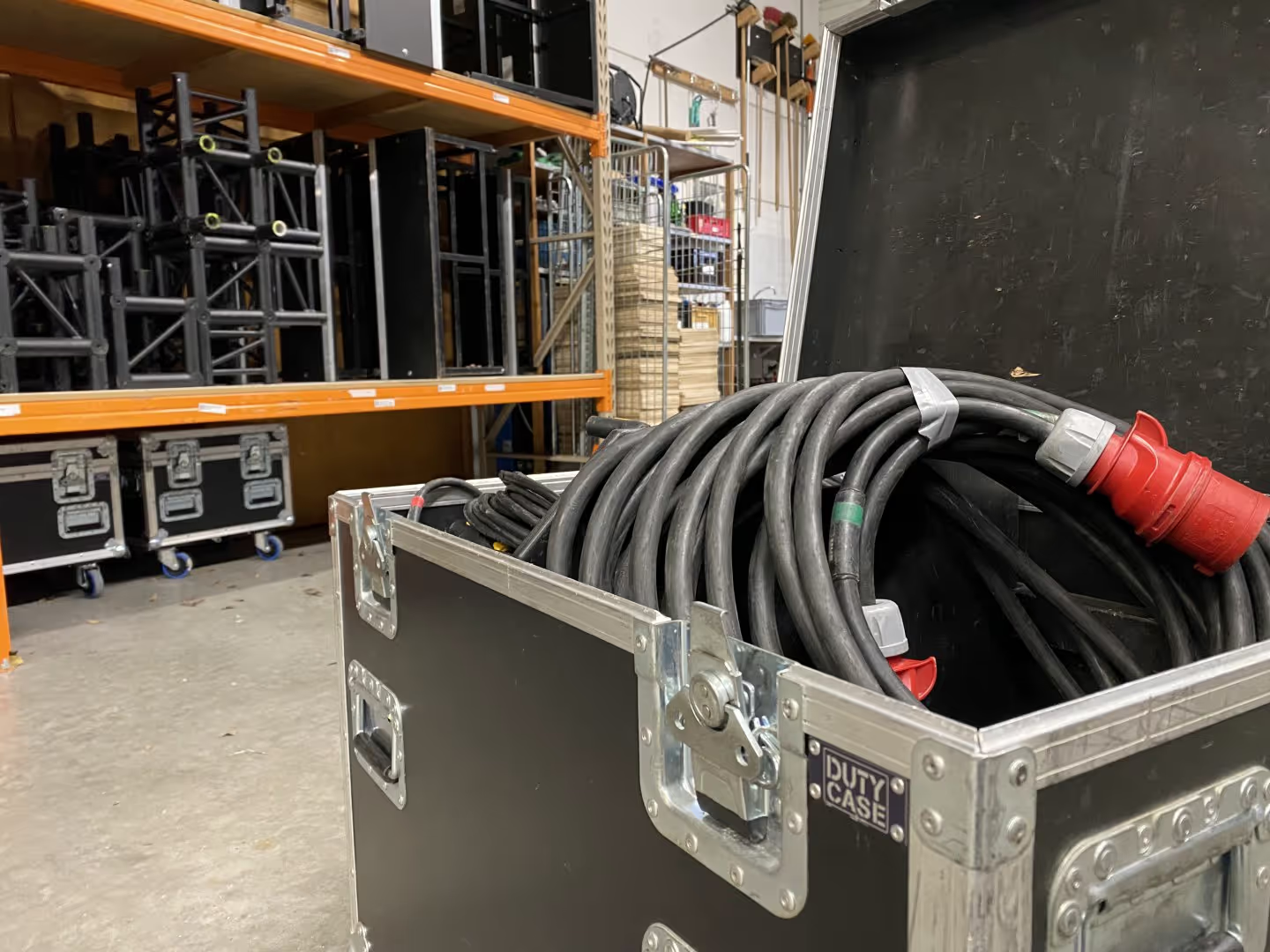Mastering Inventory Management Strategies for the AV, Events, and Media Production Industries: A Comprehensive Guide

In today’s dynamic and fast-paced AV, events, and media production sectors, mastering inventory management strategies is essential for maintaining a competitive edge. Efficient inventory management not only reduces operational costs but also ensures that critical equipment and supplies are available when needed, ultimately improving customer satisfaction. Whether you’re managing AV gear, event production assets, or media equipment, understanding the core principles of inventory management can have a significant impact on your profitability. In this guide, we’ll explore key inventory management strategies, techniques, and tools designed to streamline operations and ensure your business can meet customer demand with precision.
Understanding Inventory Management Strategies for AV, Events, and Media Production
Why Effective Inventory Management Matters
Effective inventory management is especially crucial in the AV, events, and media production industries, where managing high-value, time-sensitive equipment is a daily challenge. Whether it's managing cameras, sound equipment, lighting fixtures, or props for an event, having the right inventory at the right time is vital. By implementing solid inventory management strategies, you can avoid overstocking, minimize storage costs, and ensure that equipment is always available to meet client needs, without tying up unnecessary capital in excess inventory.
Strategic inventory management also helps improve forecasting, allowing you to anticipate future demand based on historical sales data, production schedules, and customer requirements. This reduces costly supply chain disruptions and ensures you are well-prepared for both expected and unexpected demand.
Common Inventory Challenges in AV, Events, and Media Production
Stockouts and Overstocking
Two of the most significant challenges in inventory management for AV and events businesses are stockouts (running out of essential items) and overstocking (carrying too much excess inventory). Both scenarios lead to inefficiency and higher costs. Stockouts can cause missed opportunities, client dissatisfaction, or production delays, while excess inventory results in unnecessary storage costs and can tie up working capital.
Demand Forecasting and Seasonal Fluctuations
Accurate demand forecasting can be particularly difficult in the AV and media production sectors, where projects are often seasonal or influenced by unpredictable trends. For example, demand for certain types of media production equipment may spike during film festivals, corporate events, or product launches. Businesses must adopt inventory management methods that account for these fluctuations to maintain operational efficiency.
Supply Chain Disruptions
Supply chain disruptions, whether due to delays from suppliers, geopolitical issues, or unexpected demand spikes, can severely impact your ability to deliver equipment and services on time. An effective inventory system can help you manage these challenges by maintaining adequate safety stock and leveraging forecasting techniques.
Inventory Management Strategies for AV, Events, and Media Production
Just-In-Time (JIT) Inventory
The Just-in-Time (JIT) inventory management technique is designed to minimize storage costs by ensuring products arrive only when needed. In industries like AV and event production, where equipment is often rented or used on-demand, JIT helps maintain an optimal balance between inventory costs and availability. However, JIT requires highly accurate demand forecasting and a dependable supply chain to prevent disruptions.
Economic Order Quantity (EOQ)
The Economic Order Quantity (EOQ) model is a useful tool to determine the most cost-effective order quantity. It aims to minimize the total cost of inventory, including both ordering and holding costs. In the AV and media production industry, EOQ can help businesses calculate the ideal stock levels for key equipment and consumables, such as batteries, cables, and rental items, ensuring they meet customer demand without overstocking.
ABC Analysis
ABC Analysis is a valuable technique for inventory control in industries with large and diverse inventories. It categorizes inventory into three categories—A, B, and C—based on their importance and value. Category A items, such as high-value cameras or lighting equipment, receive the most attention and tight control, while lower-value items with higher turnover, such as cables or microphones, fall into category C. This focused approach ensures efficient use of resources and prioritizes critical assets for higher returns.
Vendor-Managed Inventory (VMI)
Vendor-Managed Inventory (VMI) is another technique that works well for businesses in the AV and event production sectors. With VMI, suppliers manage the inventory levels of key components, reducing the burden on the business and ensuring stock availability. This technique is especially useful when dealing with specialized equipment that may have long lead times or require periodic replenishment.
Inventory Management Software and Tools for AV, Events, and Media Production
Inventory Management Software
An inventory management system is a must-have tool for companies in the AV, events, and media production industries. These systems automate essential tasks such as stock tracking, order management, and demand forecasting. Features like real-time inventory updates, barcode scanning, and integration with other business systems can significantly reduce manual errors and improve overall operational efficiency. Many systems offer detailed reporting and analytics to help businesses optimize inventory levels and reduce excess inventory costs.
Perpetual Inventory Systems
A perpetual inventory system helps businesses maintain continuous real-time tracking of inventory. By integrating barcode scanning, RFID technology, and automated reporting, a perpetual inventory system offers better visibility into stock levels, ensuring accurate and up-to-date data. This system is particularly beneficial for AV and events businesses, where tracking and managing a wide range of inventory items, including rental equipment and consumables, is critical to operations.
Warehouse Management Systems (WMS)
For larger AV or events businesses that manage high volumes of equipment and supplies, a warehouse management system (WMS) is essential. These systems help optimize warehouse space, improve stock organization, and ensure faster and more efficient order fulfillment. By streamlining warehouse operations, a WMS can reduce inventory holding costs, improve inventory turnover, and enhance customer satisfaction through quicker deliveries.
Best Practices for Inventory Management in AV, Events, and Media Production
Regular Audits and Reviews
Conducting regular inventory audits is essential for maintaining data accuracy and reducing discrepancies. These audits help ensure that physical stock levels match recorded inventory data, preventing errors that could lead to equipment shortages or excess stock. Routine audits also provide an opportunity to evaluate inventory turnover and adjust ordering patterns based on actual demand.
Demand Forecasting
Demand forecasting is a critical component of inventory management, especially for industries dealing with highly seasonal or project-based demands. By analyzing historical sales data and production schedules, businesses can anticipate equipment needs and adjust inventory levels accordingly. Advanced forecasting tools can predict future demand more accurately, reducing the risk of stockouts and helping businesses manage their stock more effectively.
Supplier Relationship Management (SRM)
Building strong relationships with suppliers is essential for effective supply chain management in AV, events, and media production. A reliable supplier base ensures that you can quickly restock critical equipment and meet unexpected demands. Suppliers can also provide valuable insights into market trends and help improve demand forecasting.
Crew Training and Development
Investing in crew training is another best practice for successful inventory management. Properly trained employees can efficiently use inventory management software, ensure accurate data entry, and follow best practices for managing equipment. Regular training updates will ensure your team is up-to-date on industry trends and new inventory management techniques.
Conclusion
Mastering inventory management strategies is crucial for companies in the AV, events, and media production industries. By adopting efficient inventory management processes and leveraging technology like inventory management software, demand forecasting, and automated tracking systems, businesses can reduce costs, improve operational efficiency, and ensure they can meet customer demand without disruptions. Implementing the right inventory management techniques such as EOQ, JIT, and ABC analysis can enhance profitability, while strong supplier relationships and regular audits ensure smooth operations.
By staying ahead of inventory challenges, businesses in AV, events, and media production can maintain optimal inventory levels, reduce inventory holding costs, and ultimately provide superior service to their clients. Rentman is an incredibly powerful tool that gives you real-time visibility across your entire business, from inventory management to equipment tracking and scheduling. It’s an essential part of any inventory management strategy.
FAQ
Frequently asked questions
No items found.
Previous blog posts

How Inventory Management Software for Small Businesses Transforms AV, Event, and Media Production Operations
How Inventory Management Software for Small Businesses Transforms AV, Event, and Media Production Operations

The Ultimate Guide to Creating a Winning Quote Template for Your AV, Events, and Media Production Business
The Ultimate Guide to Creating a Winning Quote Template for Your AV, Events, and Media Production Business

